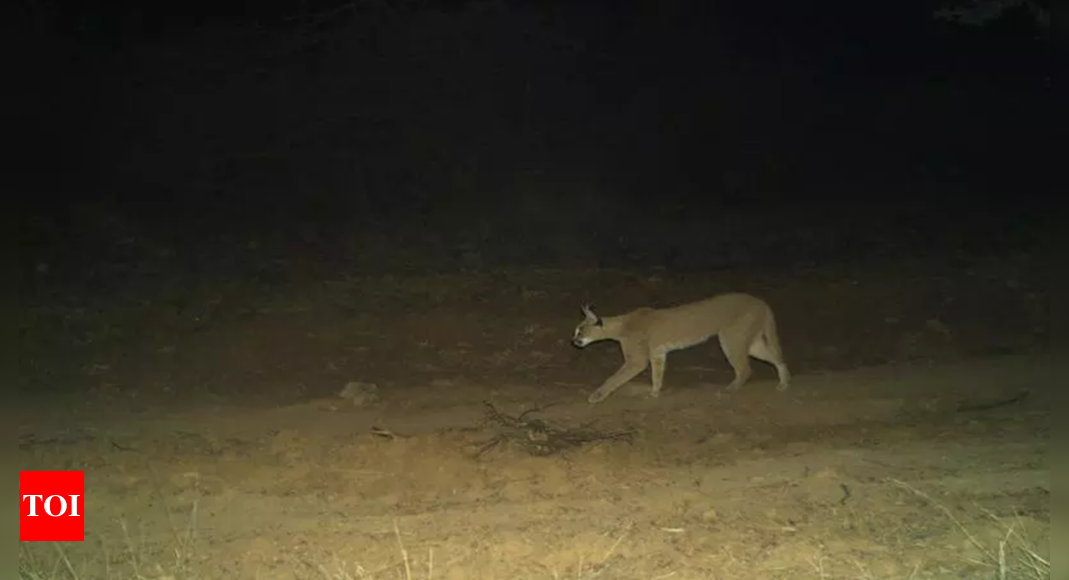JAIPUR: Photographic evidence of two enigmatic caracals, poised to become India’s second wild cat species at risk of extinction after the cheetah, was recorded in the newly notified Ramgarh Vishdhari Tiger Reserve in Bundi district. The presence of these medium-sized wild cats was captured by camera traps on Dec 19 in Ramgarh Valley and Dec 25 in Mehrupura Hills.
Sanjeev Sharma, divisional forest officer (DFO), said, “There were no records of caracals in this region over the past two decades. The presence of these two rare cats, listed as a threatened species on the IUCN Red List, is a promising sign for conservation efforts.”
Rajasthan can take pride in harbouring these critically endangered cats in its forests, which face severe threats due to habitat loss across several states. Before 1947, caracals were reported across 7,93,927 sq km of India.
However, their range declined by 47.99% between 1948 and 2000 and by a staggering 95.95% between 2001 and 2020, shrinking to a mere 16,709 sq km—less than 5% of their 1948-2000 range and just 2.17% of their pre-1947 range.
A forest official said, “A recent report published in the international Journal of Threatened Taxa highlighted 24 caracal sightings (protected under Schedule I of the Indian Wildlife Protection Act) in Rajasthan since 2001, the highest in the country. However, the current population in the state could not be determined.”
These elusive wild cats are predominantly found in dry deciduous forests with water bodies and severely eroded riverbanks adjacent to ravine habitats. They also inhabit dry, arid regions and moist woodlands.
In Rajasthan, apart from Ranthambore and its contiguous areas, including Dholpur, caracals have been spotted in Udaipur and the isolated Chittorgarh-Pratapgarh region. “The caracal is native to Africa, the Middle East, Central Asia, and India, and is listed as a threatened species on the IUCN Red List,” a forest official said.
Identified by their distinctive tufts of hair at the tips of their ears, caracals are nocturnal, agile, elusive, and adept hunters. They prey on rodents and game birds with remarkable speed and dexterity. “A caracal can leap three metres in a single bound and has paws resembling those of a cheetah. They are easily recognised by their long, pointed ears ending in tufts,” the official added.




